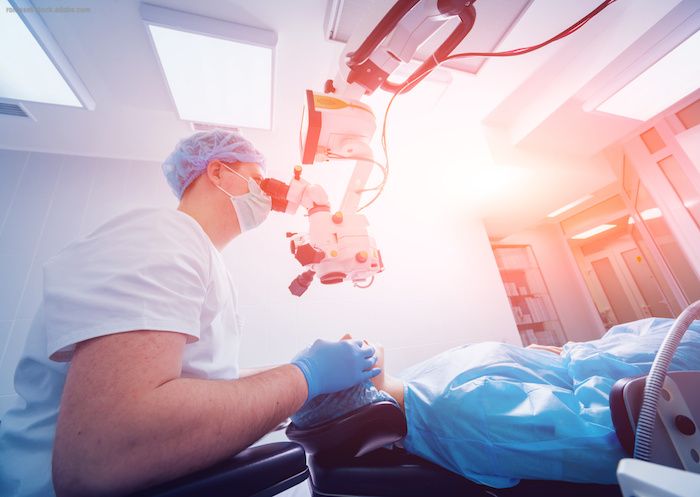Article
Avoiding sight-threatening complications after trabeculectomy
Author(s):
Secure closure of the scleral flap a key to avoiding early hypotony

Darrell WuDunn, MD, PhD, discusses intraoperative techniques for preventing hypotony and blebitis after trabeculectomy.
Reviewed by Darrell WuDunn, MD, PhD
While trabeculectomy is performed to preserve vision in patients with glaucoma, vision loss can also occur as a consequence of surgery-related complications. Darrell WuDunn, MD, PhD, discussed some intraoperative considerations for preventing two of the major trabeculectomy complications that can threaten vision-hypotony and blebitis. Dr. WuDunn is professor and chair, Department of Ophthalmology, University of Florida College of Medicine, Jacksonville, FL.
Avoiding hypotony
Secure closure of the scleral flap is paramount for avoiding early hypotony. Overcauterization of the sclera is one issue that can interfere with the ability to achieve good closure with resulting overdrainage.
As a result, Dr. WuDunn recommended applying cautery in pinpoint fashion to blood vessels posterior to the intended location of the scleral flap rather than directly on the scleral bed where the flap will be.
“Excessive cautery will shrink the scleral tissue and make it difficult to get a good match between the flap and the scleral bed,” he said. “Surgeons may then find themselves in the situation where they are placing more sutures, which in turn can lead to cornea striae and significant astigmatism.”
Preplacement of the scleral flap sutures before while the eye is still firm is another strategy. Dr. WuDunn said that he uses to facilitate good scleral flap closure. The sutures are placed before making the sclerostomy and left untied.
“It is much easier to line up the sutures when there is pressure in the eye than it is to line up the corners of the flap and the bed after the eye is open and soft,” he explained.
Dr. WuDunn also cautioned about being judicious when creating the sclerostomy in terms of size. The bottom line is that a huge sclerostomy is not necessary.
“We are all perfectionists, and I am sure we are all also aware of the statement, ‘Perfect is the enemy of good,’” said Dr. WuDunn.
“While we may be tempted by the thought that we can get the IOP a little lower by making the sclerostomy a little bit bigger, if we try to enlarge it, we run the risk that the sclerostomy will become too big and difficult to cover adequately with the scleral flap, Dr. WuDunn said.
Preventing bleb leaks
Switching from doing a limbus-based fornix incision to a fornix-based limbus incision has been useful for minimizing the risk of late bleb leaks that can lead to blebitis or endophthalmitis.
Dr. WuDunn said he was motivated to make the transition based on a study he did at Indiana University with Louis Cantor, MD, analyzing trabeculectomy outcomes. In their series of patients operated on with a limbus-based fornix incision, they found a 4% rate of bleb leakage per year over a five-year period.
“The limbus-based incision creates a ring of fibrous tissue encircling the bleb, the so-called ring of steel,” Dr. WuDunn explained. “The contracting scar tissue causes the bleb to balloon and thin, making it prone to leakage.”
He acknowledged that the fornix-based limbus incision brings with it an increased risk for early wound leaks. To address that problem, Dr. WuDunn said he went through multiple iterations of his conjunctival closure technique in order to achieve a watertight seal.
RELATED: The role of IPL in OSD treatmentA solution
His solution is a variation on a modification of the Wise closure procedure described by Garry Condon, MD. To Dr. Condon’s running horizontal mattress suture, Dr. WuDunn incorporates a purse string closure at each end of the incision.
Compared with Dr. Condon’s technique, Dr. WuDunn said his has an advantage of mitigating patient complaints about a foreign body sensation because it buries the suture knot within the bulge of the purse-strings.
For surgeons who might prefer a limbus-based fornix incision, Dr. WuDunn acknowledged a recommendation made by Kuldev Singh, MD, to apply mitomycin-C diffusely over a wide area to reduce the formation of the ring of steel around the bleb and thus minimizing the risk of late bleb leaks.
RELATED: Lid hygiene device improves meibomian gland dysfunction, blepharitis
Disclosures:
Darrell WuDunn, MD, PhD
E: Darrell.wudunn@jax.ufl.edu
This article was adapted from Dr. WuDunn’s presentation at the 2019 American Glaucoma Society annual meeting. Dr. WuDunn has no relevant financial interests to disclose.
Newsletter
Don’t miss out—get Ophthalmology Times updates on the latest clinical advancements and expert interviews, straight to your inbox.




